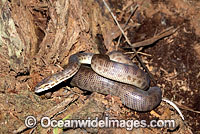
|
|
|
|
Children's Python (Antaresia childreni). Northern Australia. Non-venomous snake.
© Gary Bell / OceanwideImages.com |
|
|
|
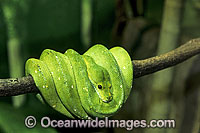
|
|
|
|
Green Python (Morelia viridis). Rainforests of North Queensland, Australia and Papua New Guinea. Non-venomous snake.
© Gary Bell / OceanwideImages.com |
|
|
|
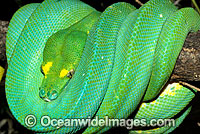
|
|
|
|
Green Python (Morelia viridis) - sub-adult still possessing juvenile yellow markings. Rainforests of North Queensland, Australia and Papua New Guinea. Non-venomous snake.
© Gary Bell / OceanwideImages.com |
|
|
|
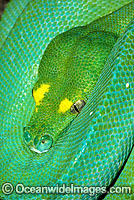
|
|
|
|
Green Python (Morelia viridis) - sub-adult still possessing juvenile yellow markings. Rainforests of North Queensland, Australia and Papua New Guinea. Non-venomous snake.
© Gary Bell / OceanwideImages.com |
|
|
|
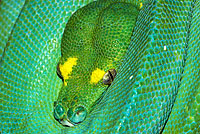
|
|
|
|
Green Python (Morelia viridis) - sub-adult still possessing juvenile yellow markings. Rainforests of North Queensland, Australia and Papua New Guinea. Non-venomous snake.
© Gary Bell / OceanwideImages.com |
|
|
|
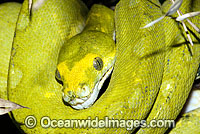
|
|
|
|
Green Python (Morelia viridis) - sub-adult still possessing juvenile yellow markings. Rainforests of North Queensland, Australia and Papua New Guinea. Non-venomous snake.
© Gary Bell / OceanwideImages.com |
|
|
|
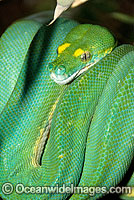
|
|
|
|
Green Python (Morelia viridis) - sub-adult still possessing juvenile yellow markings. Rainforests of North Queensland, Australia and Papua New Guinea. Non-venomous snake.
© Gary Bell / OceanwideImages.com |
|
|
|
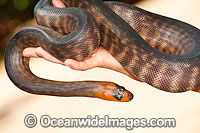
|
|
|
|
Woma Python (Aspidites ramsayi). Found in desert and adjacent areas of central Australia. Listed as Endangered on the IUCN Red List. Now a Protected species. Non venomous.
© Gary Bell / OceanwideImages.com |
|
|
|
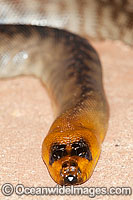
|
|
|
|
Woma Python (Aspidites ramsayi). Found in desert and adjacent areas of central Australia. Listed as Endangered on the IUCN Red List. Now a Protected species. Non venomous.
© Gary Bell / OceanwideImages.com |
|
|
|
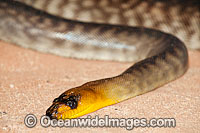
|
|
|
|
Woma Python (Aspidites ramsayi). Found in desert and adjacent areas of central Australia. Listed as Endangered on the IUCN Red List. Now a Protected species. Non venomous.
© Gary Bell / OceanwideImages.com |
|
|
|
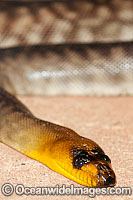
|
|
|
|
Woma Python (Aspidites ramsayi). Found in desert and adjacent areas of central Australia. Listed as Endangered on the IUCN Red List. Now a Protected species. Non venomous.
© Gary Bell / OceanwideImages.com |
|
|
|
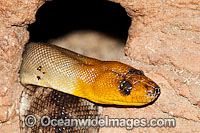
|
|
|
|
Woma Python (Aspidites ramsayi). Found in desert and adjacent areas of central Australia. Listed as Endangered on the IUCN Red List. Now a Protected species. Non venomous.
© Gary Bell / OceanwideImages.com |
|
|
|
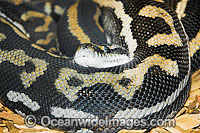
|
|
|
|
Woma Python (Aspidites ramsayi). Found in desert and adjacent areas of central Australia. Listed as Endangered on the IUCN Red List. Now a Protected species. Non venomous.
© Gary Bell / OceanwideImages.com |
|
|
|
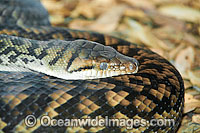
|
|
|
|
Woma Python (Aspidites ramsayi). Found in desert and adjacent areas of central Australia. Listed as Endangered on the IUCN Red List. Now a Protected species. Non venomous.
© Gary Bell / OceanwideImages.com |
|
|
|
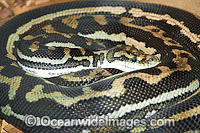
|
|
|
|
Woma Python (Aspidites ramsayi). Found in desert and adjacent areas of central Australia. Listed as Endangered on the IUCN Red List. Now a Protected species. Non venomous.
© Gary Bell / OceanwideImages.com |
|
|
|
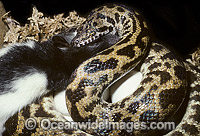
|
|
|
|
Stimson's Python (Antaresia stimsoni), captive snake feeding on a rat whilst sitting on a cluster of eggs. Found throughout Australia, except the far north and extreme south/south-east.
© Gary Bell / OceanwideImages.com |
|
|
|
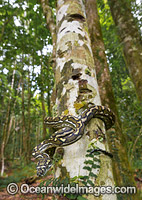
|
|
|
|
Carpet Python (Morelia spilota). Found throughout Australia in a wide variety of habitats, from rainforests to woodlands and arid lands. There are 6 subspecies commonly referred to as Carpet Pythons and Diamond Pythons. Photo was taken in Coffs Harbour, N
© Gary Bell / OceanwideImages.com |
|
|
|
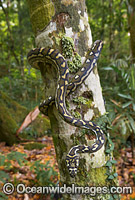
|
|
|
|
Carpet Python (Morelia spilota). Found throughout Australia in a wide variety of habitats, from rainforests to woodlands and arid lands. There are 6 subspecies commonly referred to as Carpet Pythons and Diamond Pythons. Photo was taken in Coffs Harbour, N
© Gary Bell / OceanwideImages.com |
|
|
|
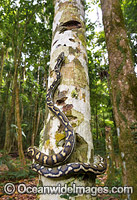
|
|
|
|
Carpet Python (Morelia spilota). Found throughout Australia in a wide variety of habitats, from rainforests to woodlands and arid lands. There are 6 subspecies commonly referred to as Carpet Pythons and Diamond Pythons. Photo was taken in Coffs Harbour, N
© Gary Bell / OceanwideImages.com |
|
|
|
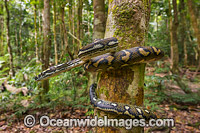
|
|
|
|
Carpet Python (Morelia spilota). Found throughout Australia in a wide variety of habitats, from rainforests to woodlands and arid lands. There are 6 subspecies commonly referred to as Carpet Pythons and Diamond Pythons. Photo was taken in Coffs Harbour, N
© Gary Bell / OceanwideImages.com |
|
|
|
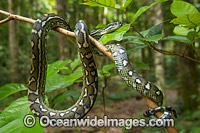
|
|
|
|
Carpet Python (Morelia spilota). Found throughout Australia in a wide variety of habitats, from rainforests to woodlands and arid lands. There are 6 subspecies commonly referred to as Carpet Pythons and Diamond Pythons. Photo was taken in Coffs Harbour, N
© Gary Bell / OceanwideImages.com |
|
|
|
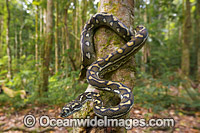
|
|
|
|
Carpet Python (Morelia spilota). Found throughout Australia in a wide variety of habitats, from rainforests to woodlands and arid lands. There are 6 subspecies commonly referred to as Carpet Pythons and Diamond Pythons. Photo was taken in Coffs Harbour, N
© Gary Bell / OceanwideImages.com |
|
|
|
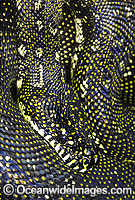
|
|
|
|
Diamond Python (Morelia spilota spilota). Gosford, New South Wales, Australia. Non-venomous snake.
© Gary Bell / OceanwideImages.com |
|
|
|
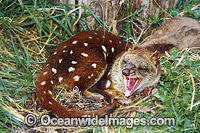
|
|
|
|
Spotted-tailed Quoll (Dasyurus maculatus). Also known as Tiger Cat. Mole Creek, Tasmania, Australia. Classified Near Threatened on the IUCN Red List.
© Gary Bell / OceanwideImages.com |
|
|
|
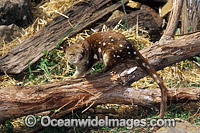
|
|
|
|
Spotted-tailed Quoll (Dasyurus maculatus). Also known as Tiger Cat. Mole Creek, Tasmania, Australia. Classified Near Threatened on the IUCN Red List.
© Gary Bell / OceanwideImages.com |
|
|
|

|
|
|
|
Spotted-tailed Quoll (Dasyurus maculatus). Also known as Tiger Cat. Mole Creek, Tasmania, Australia. Classified Near Threatened on the IUCN Red List.
© Gary Bell / OceanwideImages.com |
|
|
|
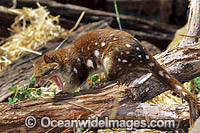
|
|
|
|
Spotted-tailed Quoll (Dasyurus maculatus). Also known as Tiger Cat. Mole Creek, Tasmania, Australia. Classified Near Threatened on the IUCN Red List.Vulnarable on the IUCN Red List.
© Gary Bell / OceanwideImages.com |
|
|
|
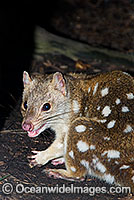
|
|
|
|
Eastern Quoll (Dasyurus viverrinus). Once widespread in south-east mainland Australia, but now only known to exist in Tasmania where it is common. Tasmania, Australia. Classified Near Threatened on IUCN Red List.
© Gary Bell / OceanwideImages.com |
|
|
|
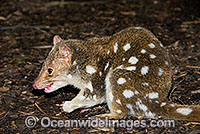
|
|
|
|
Eastern Quoll (Dasyurus viverrinus). Once widespread in south-east mainland Australia, but now only known to exist in Tasmania where it is common. Tasmania, Australia. Classified Near Threatened on IUCN Red List.
© Gary Bell / OceanwideImages.com |
|
|
|
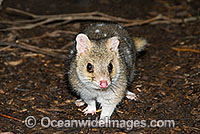
|
|
|
|
Eastern Quoll (Dasyurus viverrinus). Once widespread in south-east mainland Australia, but now only known to exist in Tasmania where it is common. Tasmania, Australia. Classified Near Threatened on IUCN Red List.
© Gary Bell / OceanwideImages.com |
|
|
|
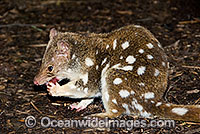
|
|
|
|
Eastern Quoll (Dasyurus viverrinus). Once widespread in south-east mainland Australia, but now only known to exist in Tasmania where it is common. Tasmania, Australia. Classified Near Threatened on IUCN Red List.
© Gary Bell / OceanwideImages.com |
|
|
|
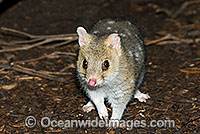
|
|
|
|
Eastern Quoll (Dasyurus viverrinus). Once widespread in south-east mainland Australia, but now only known to exist in Tasmania where it is common. Tasmania, Australia. Classified Near Threatened on IUCN Red List.
© Gary Bell / OceanwideImages.com |
|
|
|
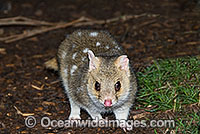
|
|
|
|
Eastern Quoll (Dasyurus viverrinus). Once widespread in south-east mainland Australia, but now only known to exist in Tasmania where it is common. Tasmania, Australia. Classified Near Threatened on IUCN Red List.
© Gary Bell / OceanwideImages.com |
|
|
|
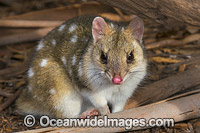
|
|
|
|
Eastern Quoll (Dasyurus viverrinus). Once widespread in south-east mainland Australia, but now only known to exist in Tasmania where it is common. Tasmania, Australia. Classified Near Threatened on IUCN Red List.
© Gary Bell / OceanwideImages.com |
|
|
|
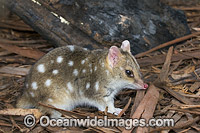
|
|
|
|
Eastern Quoll (Dasyurus viverrinus). Once widespread in south-east mainland Australia, but now only known to exist in Tasmania where it is common. Tasmania, Australia. Classified Near Threatened on IUCN Red List.
© Gary Bell / OceanwideImages.com |
|
|
|
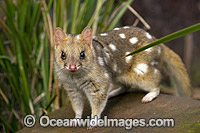
|
|
|
|
Eastern Quoll (Dasyurus viverrinus). Once widespread in south-east mainland Australia, but now only known to exist in Tasmania where it is common. Tasmania, Australia. Classified Near Threatened on IUCN Red List.
© Gary Bell / OceanwideImages.com |
|
|
|
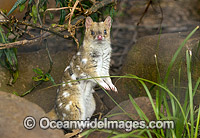
|
|
|
|
Eastern Quoll (Dasyurus viverrinus). Once widespread in south-east mainland Australia, but now only known to exist in Tasmania where it is common. Tasmania, Australia. Classified Near Threatened on IUCN Red List.
© Gary Bell / OceanwideImages.com |
|
|
|
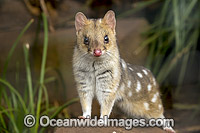
|
|
|
|
Eastern Quoll (Dasyurus viverrinus). Once widespread in south-east mainland Australia, but now only known to exist in Tasmania where it is common. Tasmania, Australia. Classified Near Threatened on IUCN Red List.
© Gary Bell / OceanwideImages.com |
|
|
|
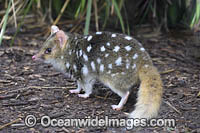
|
|
|
|
Eastern Quoll (Dasyurus viverrinus). Once widespread in south-east mainland Australia, but now only known to exist in Tasmania where it is common. Tasmania, Australia. Classified Near Threatened on IUCN Red List.
© Gary Bell / OceanwideImages.com |
|
|
|
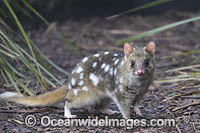
|
|
|
|
Eastern Quoll (Dasyurus viverrinus). Once widespread in south-east mainland Australia, but now only known to exist in Tasmania where it is common. Tasmania, Australia. Classified Near Threatened on IUCN Red List.
© Gary Bell / OceanwideImages.com |
|
|
|
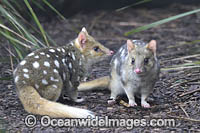
|
|
|
|
Eastern Quoll (Dasyurus viverrinus). Once widespread in south-east mainland Australia, but now only known to exist in Tasmania where it is common. Tasmania, Australia. Classified Near Threatened on IUCN Red List.
© Gary Bell / OceanwideImages.com |
|
|
|
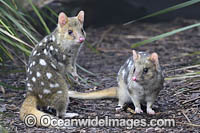
|
|
|
|
Eastern Quoll (Dasyurus viverrinus). Once widespread in south-east mainland Australia, but now only known to exist in Tasmania where it is common. Tasmania, Australia. Classified Near Threatened on IUCN Red List.
© Gary Bell / OceanwideImages.com |
|
|
|
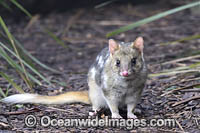
|
|
|
|
Eastern Quoll (Dasyurus viverrinus). Once widespread in south-east mainland Australia, but now only known to exist in Tasmania where it is common. Tasmania, Australia. Classified Near Threatened on IUCN Red List.
© Gary Bell / OceanwideImages.com |
|
|
|
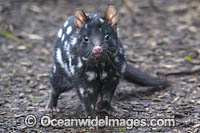
|
|
|
|
Eastern Quoll (Dasyurus viverrinus), rare black colour phase. Once widespread in south-east mainland Australia, but now only known to exist in Tasmania where it is common. Tasmania, Australia. Threatened species.
© Gary Bell / OceanwideImages.com |
|
|
|
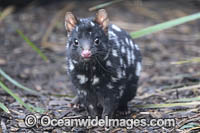
|
|
|
|
Eastern Quoll (Dasyurus viverrinus), rare black colour phase. Once widespread in south-east mainland Australia, but now only known to exist in Tasmania where it is common. Tasmania, Australia. Threatened species.
© Gary Bell / OceanwideImages.com |
|
|
|
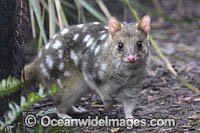
|
|
|
|
Eastern Quoll (Dasyurus viverrinus). Once widespread in south-east mainland Australia, but now only known to exist in Tasmania where it is common. Tasmania, Australia. Classified Near Threatened on IUCN Red List.
© Gary Bell / OceanwideImages.com |
|
|
|
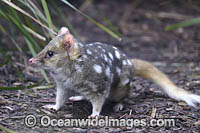
|
|
|
|
Eastern Quoll (Dasyurus viverrinus). Once widespread in south-east mainland Australia, but now only known to exist in Tasmania where it is common. Tasmania, Australia. Classified Near Threatened on IUCN Red List.
© Gary Bell / OceanwideImages.com |
|
|
|
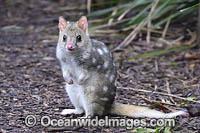
|
|
|
|
Eastern Quoll (Dasyurus viverrinus). Once widespread in south-east mainland Australia, but now only known to exist in Tasmania where it is common. Tasmania, Australia. Classified Near Threatened on IUCN Red List.
© Gary Bell / OceanwideImages.com |
|
|
|
